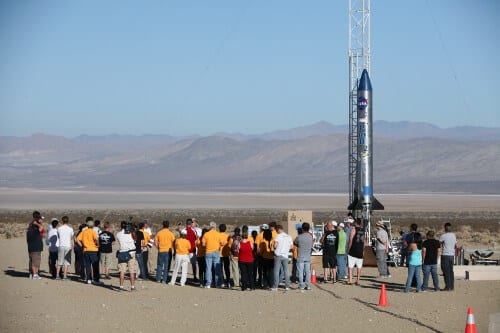The second article in the series about tiny satellites from the December 2013 issue of "Rosh Gadol" magazine in preparation for Space Week this week

The construction of nanosatellites is not enough to bring about a real revolution. It is also necessary to develop a compatible launch platform that will be efficient and cheap and will allow them to be placed in the required orbit. At the Ramon 2013 conference there was a "round table" on the subject of tiny satellites* that included experts from the world of tiny satellites. One of the important conclusions obtained from the discussions is the need for launchers for tiny satellites, at reasonable prices relative to the cost of the satellites, which usually amount to hundreds of thousands of dollars.
In the past, attempts were made in the USA, by the Defense Advanced Research Projects Agency (DARPA), to develop a launcher for tiny satellites weighing up to 50 kg (equivalent to the weight of 5 nano-satellites) for low orbit around the Earth, for combat assistance missions (**RASCAL ).
The advantage of the tiny satellites is their relatively low cost and the possibility of being produced in groups on a short schedule. The ability to communicate between them in formation flight and the ability to perform different tasks increase their advantage. It is also possible to dispatch to different routes and at different distances within a short notice, thus enabling continuous coverage of the area of interest.
How to launch?
One of the launch solutions chosen by DARPA is to accelerate the launcher with the satellite from a fighter plane to a speed of about Mach 4 upon exiting the atmosphere. Then the launcher with the satellite on top will be released and accelerated with the help of two or three additional stages to its final orbit in space.
The possibility of launching from an airplane is also being tested at Rafael, as was recently presented at a conference held by the Fisher Institute of the Israeli Air Force and the American Rand Institute.
A cheaper and faster solution was presented at the last Ramon conference by the Italian company HIT09, which is partnered by faculty members from the University of Padua. Their idea is a launcher powered by solid hybrid engines
(Solid Hybrid Rockets), which are a combination of a rocket system in which the solid propellant is paraffin (wax) and the oxidizer is a liquid that is injected into the combustion chamber (such as liquid oxygen).
Since the University of Padua and the HIT09 company have already gained a lot of experience in developing hybrid engines, with a solid paraffin type propellant, the cost of this type of launcher will be relatively very cheap. Therefore, the cost of launching a nanosatellite will not exceed the price of the satellite by much, i.e. in the price range of hundreds of thousands of dollars for launching a nanosatellite.
The use of a hybrid engine provides additional advantages:
- It can be turned on and off alternately.
- There is complete separation between the fuel and the oxidizer, which gives a safety advantage.
- The materials required to build the engine are available and cheap on the free market.
What remains now is to complete the development of the engines as a system for launching tiny satellites and like any technological project it will take 5-3 years until we reach an operational system.
* Under the guidance of Prof. Walter Peters, President of the International Space University (ISU) and H.M. as Chairman of the Space Committee at the National Research and Development Council at the Ministry of Science, Technology and Space
** Rapid Access Small Cargo Affordable Launch
In the same topic on the science website:
- The era of tiny satellites / Prof. Haim Ashad
- Space in the port: an exhibition of space photographs in the port of Tel Aviv during the Israeli Space Week * Admission is free
- Kol Israel: Israel is in talks to launch a second astronaut
- Astronauts, heads of space agencies and space industry personnel at the 9th International Space Conference of the Israel Space Agency at the Ministry of Science and the Fisher Institute
- Israel Space Week events - on the website of the Ministry of Science, Technology and Space
